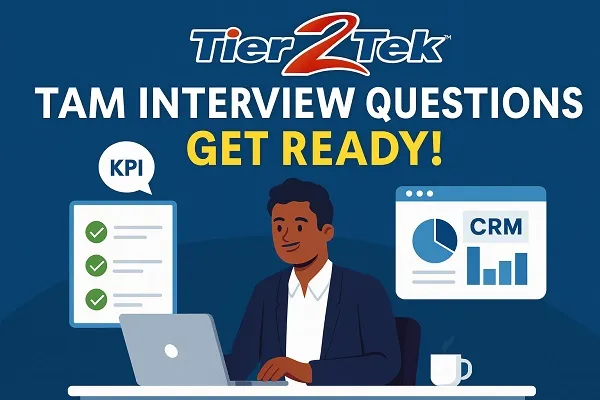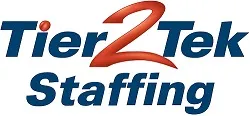Technical Account Manager (TAM) Interview Questions with Answers

Landing a Technical Account Manager (TAM) role requires a strong blend of technical know-how, customer relationship skills, and problem-solving abilities. During interviews, expect questions that evaluate both your technical expertise and your ability to support and manage enterprise customers. Below are 15 frequently asked TAM interview questions with concise answers to help you prepare effectively.
15 Technical Account Manager Interview Questions & Short Answers
1. What does a Technical Account Manager do?
A TAM bridges the gap between a company’s technical team and its customers, ensuring smooth product adoption, handling technical escalations, and driving customer success.
2. How do you prioritize tasks across multiple accounts?
I assess task urgency, business impact, and customer expectations, then use tools like Jira or Salesforce to manage and track priorities.
3. How do you handle a high-priority client issue?
I acknowledge the issue quickly, communicate transparently with the client, and coordinate with internal teams to resolve it efficiently.
4. How do you explain technical issues to non-technical stakeholders?
I simplify the language, focus on the business impact, and use analogies or visuals when necessary to ensure clarity.
5. What tools have you used to manage customer accounts?
I’ve used CRM platforms like Salesforce, ticketing systems like Zendesk or ServiceNow, and project tools like Asana or Jira.
6. Describe a time you turned around a difficult customer relationship.
I listened actively, addressed their concerns with a clear action plan, delivered consistent updates, and regained trust through results.
7. What KPIs would you track as a TAM?
Customer satisfaction (CSAT), Net Promoter Score (NPS), SLA adherence, ticket resolution time, and account growth indicators.
8. How do you stay current with technical trends?
I follow industry blogs, take online courses, attend webinars, and regularly collaborate with engineering or product teams.
9. Have you ever worked with SLAs?
Yes, I ensure SLAs are met by setting realistic expectations, monitoring timelines, and escalating issues as needed.
10. How do you collaborate with sales or product teams?
I share customer feedback, identify upsell opportunities, and help shape the roadmap by aligning client needs with product capabilities.
11. What’s your experience with cloud platforms?
I’ve worked with AWS and Azure, helping clients with deployments, troubleshooting, and best practices for scalability and cost optimization.
12. How do you handle conflicting priorities from different stakeholders?
I assess the impact, communicate transparently, and work with stakeholders to realign priorities based on strategic value.
13. What would you do if a customer threatened to leave?
I’d engage immediately, listen to their concerns, work on a recovery plan, and escalate internally to offer solutions or compromises.
14. How do you measure customer success?
Through retention rates, usage metrics, feedback surveys, and alignment with the customer’s business goals.
15. Why do you want to be a Technical Account Manager?
I enjoy blending technical problem-solving with client-facing collaboration, and TAM roles allow me to deliver real impact across both.
📘 Common Acronyms to Know Before Your TAM Interview
Understanding key acronyms can help you speak confidently and professionally during interviews. Here are some you should know:
P1/P2 – Priority 1 / Priority 2: Severity levels for issues or tickets (P1 = Critical, P2 = High).
TAM – Technical Account Manager: A role focused on customer satisfaction, technical guidance, and account growth.
SLA – Service Level Agreement: A commitment between provider and customer on the expected level of service.
KPI – Key Performance Indicator: Metrics used to measure performance against goals.
NPS – Net Promoter Score: Measures customer loyalty by asking how likely they are to recommend a service.
CSAT – Customer Satisfaction Score: A quick metric to gauge customer happiness.
CRM – Customer Relationship Management: Software for managing customer interactions and data.
API – Application Programming Interface: A set of rules that allows different software entities to communicate.
RCA – Root Cause Analysis: A method of identifying the source of a problem.
SOW – Statement of Work: A document outlining project deliverables, timelines, and responsibilities.
OKR – Objectives and Key Results: A framework for setting and tracking goals.
